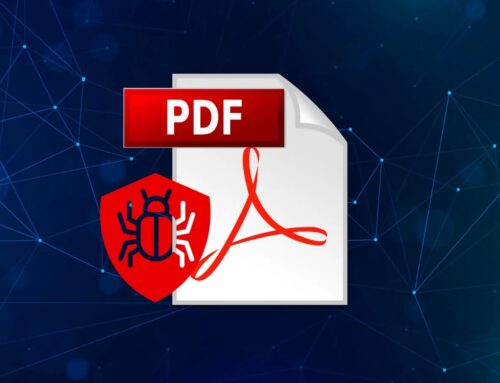
New Malware Attack Exploiting TASPEN’s Legacy to Target Indonesian Senior Citizens
The Betrayal of Trust: How a New Malware Exploits TASPEN’s Legacy to Prey on Indonesian Senior Citizens
A disturbing new front has opened in the ceaseless battle against cyber threats, revealing a highly sophisticated malware campaign meticulously designed to target Indonesia’s most vulnerable digital citizens. This insidious operation preys on an inherent sense of trust, impersonating PT Dana Tabungan dan Asuransi Pegawai Negeri (TASPEN), the state-owned pension fund responsible for managing a staggeringly large sum – over $15.9 billion in assets – for millions of Indonesian civil servants and retirees. This attack is not merely about financial gain; it represents a profound betrayal of trust, weaponizing the very institution designed to secure the financial future of those who have dedicated their lives to public service.
Anatomy of the Attack: Impersonating TASPEN and Weaponizing Trust
The core of this malware campaign lies in its calculated exploitation of a revered national institution. TASPEN, with its deep roots in Indonesian society, serves as a pillar of financial security for countless senior citizens. By masquerading as official TASPEN communications, the attackers aim to bypass typical skepticism and capitalize on the trust cultivated over decades. This social engineering tactic is particularly effective against an demographic that may have less experience navigating the complexities of the digital landscape, making them prime targets for sophisticated phishing and malware delivery techniques.
Details emerging suggest the malware is delivered through channels designed to appear legitimate. While the precise infection vector (e.g., malicious links in emails, corrupted attachments, fake app downloads) isn’t fully detailed in the initial alert, the modus operandi points to a concerted effort to trick users into installing or executing malicious payloads under the guise of TASPEN-related activities, such as pension updates, benefit disbursements, or critical account notifications.
Targeted Demographics and Potential Impact
The choice to target TASPEN beneficiaries is strategic and deeply concerning. Indonesian senior citizens, many of whom rely solely on their pensions, represent a demographic with potentially significant savings and a strong reliance on official communications. The successful deployment of this malware could lead to:
- Financial Ruin: Direct theft of funds from bank accounts linked to or accessed through compromised systems.
- Identity Theft: Extortion of personal identifiable information (PII) such as national identification numbers, addresses, and banking details, leading to long-term financial and personal distress.
- Data Breach: Compromise of sensitive personal data, potentially impacting not just individuals but also the integrity of TASPEN’s broader user base if systems are interconnected.
- Loss of Trust: Erosion of public confidence in essential government institutions, impacting broader cybersecurity awareness and engagement efforts.
Remediation Actions and Protective Measures
Mitigating the risk of falling victim to such a targeted campaign requires a multi-faceted approach, combining public awareness with robust cybersecurity practices. For individuals and organizations, immediate and proactive steps are crucial:
- Verify All Communications: Always assume unsolicited communications from TASPEN (or any financial institution) could be fraudulent. Verify the legitimacy of emails, SMS, and calls by directly contacting TASPEN through official channels (official website, verified phone numbers) – never through links or numbers provided in the suspicious communication.
- Employ Strong Authentication: Enable Two-Factor Authentication (2FA) or Multi-Factor Authentication (MFA) on all financial accounts and online services, especially those linked to pensions or banking.
- Software Updates: Keep operating systems, web browsers, and antivirus software up to date. Patches often address known vulnerabilities that malware exploits.
- Antivirus/Anti-Malware Software: Install and regularly update reputable antivirus and anti-malware software. Perform frequent scans of all devices.
- Educate and Inform: Organizations, especially those working with senior demographics, must prioritize cybersecurity awareness training. Emphasize the dangers of phishing, social engineering, and the importance of verifying sources.
- Backup Data: Regularly back up important data to an external, offline storage device to mitigate the impact of ransomware or data loss.
Tools for Detection and Prevention
While specific CVEs for this particular malware campaign are not yet publicly associated, general tools and practices are vital for detection and prevention:
| Tool Name | Purpose | Link |
|---|---|---|
| Endpoint Detection and Response (EDR) Solutions | Real-time monitoring and threat detection on endpoints, identifying suspicious activities and preventing malware execution. | (Consult reputable vendors like CrowdStrike, SentinelOne) |
| Next-Generation Antivirus (NGAV) | Advanced threat protection that uses AI/ML to detect known and unknown malware, ransomware, and fileless attacks. | (Consult reputable vendors like Sophos, Bitdefender) |
| Phishing Simulation Platforms | Trains users to recognize and avoid phishing attempts through realistic simulated attacks. | (Consult reputable vendors like KnowBe4, Cofense) |
| Web Application Firewalls (WAF) | Protects web applications from a variety of attacks, including those used to deliver malware or steal data. | (Consult reputable vendors like Cloudflare, Akamai) |
| Network Intrusion Detection/Prevention Systems (NIDS/NIPS) | Monitors network traffic for suspicious activity and blocks malicious connections. | (Consult reputable vendors like Snort, Suricata) |
Conclusion: Vigilance in the Face of Evolving Threats
The emergence of this TASPEN-impersonating malware campaign underscores a grim reality: cybercriminals continuously adapt their tactics, exploiting human trust and institutional legacies to achieve their malicious aims. Protecting vulnerable populations, such as senior citizens, demands heightened vigilance from individuals and collective action from cybersecurity professionals and government agencies. Proactive education, robust security measures, and a healthy dose of skepticism regarding unsolicited digital communications are the front lines of defense against such calculated betrayals of trust. Staying informed on threats, like this one reported by Cyber Security News, is paramount in safeguarding our digital integrity and financial well-being.





